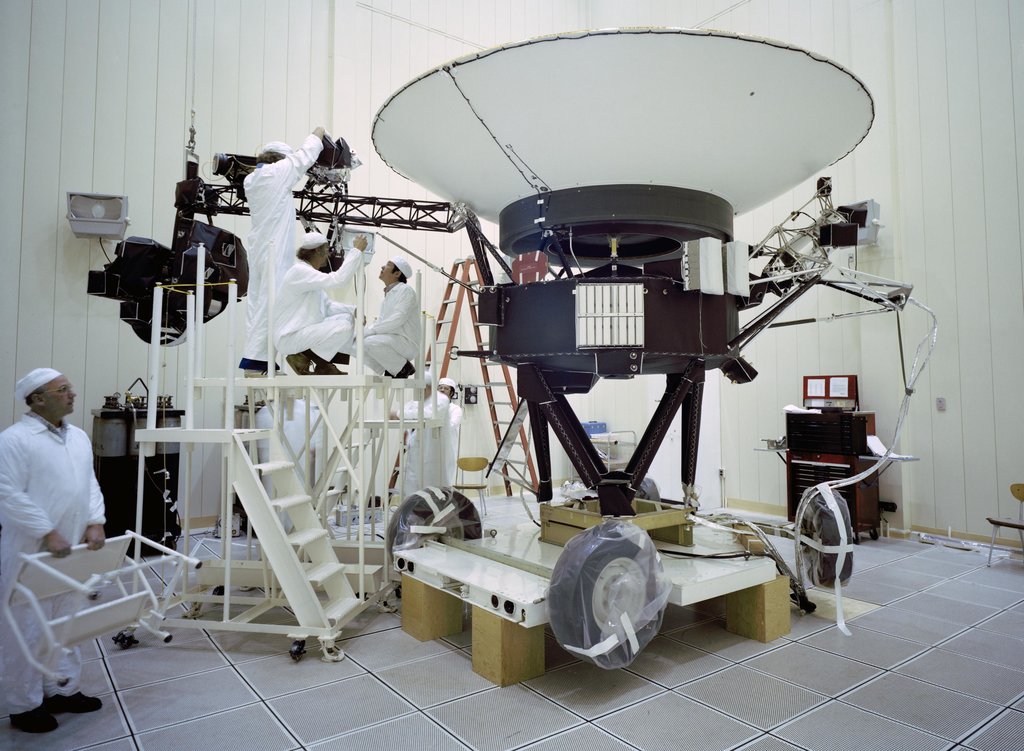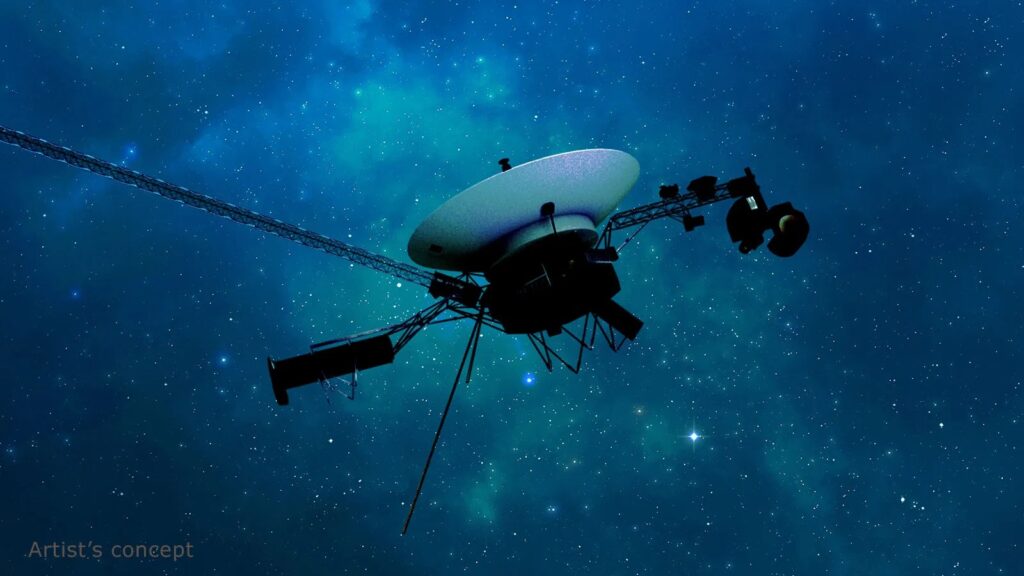NASA specialists have successfully solved the problem with the thrusters of the Voyager 1 spacecraft. Due to clogged fuel tubes, their efficiency was reduced, making it difficult to maintain communication with Earth.
Clogged thrusters
Voyager 1 is the most distant spacecraft. During its 47-year mission, it has traveled a distance of 164.6 a. e. (24.6 billion km) from the Sun. To stay in touch with Earth, Voyager 1 needs to keep its antenna in the correct position. For this purpose, its thrusters produce a series of short pulses lasting tens of milliseconds each day. The fuel used is hydrazine, which is converted into a gas and released in jets, correcting the position of the vehicle.

Both Voyager probes are equipped with three sets of thrusters: two sets of attitude propulsion thrusters and one set of trajectory correction thrusters. They were used for a variety of purposes during planetary flybys. But as Voyager 1 has been leaving the Solar System and traveling on a constant trajectory for the past forty years, its thrusters needs have been greatly simplified. It is possible to use any of the set of thrusters to point the vehicle at Earth.
Back in 2002, engineers noticed that some of the fuel tubes in Voyager 1’s attitude propulsion thrusters were clogged with silicon dioxide. It’s a byproduct that has released with age from the rubber diaphragm in its fuel tank. As a result, the decision was made to switch the probe to the second set of attitude propulsion thrusters. When it showed signs of clogging in 2018, too, the team switched to trajectory correction maneuvering thrusters.
By 2024, the fuel tubes of the maneuvering thrusters are also clogged, and more severely than the tubes of the attitude propulsion thrusters. While their diameter was originally 0.25 millimeters, the clogging reduced it to 0.035 millimeters, or about half the width of a human hair. This significantly reduced the efficiency of the thrusters. As a result, the engineers had to decide to switch back to one of the sets of attitude propulsion thrusters.
Heating up in interstellar space
Switching to other thrusters would have been a relatively simple operation in the 1980s or even in 2002. But a lot has changed since then. Voyager 1’s radioisotope generators (RTGs) now produce far less power than they did when the mission was launched — and less and less every year. Because of this, engineers had to shut down all non-essential systems, including some heaters.

While these measures reduced power consumption, they also caused the spacecraft to become colder, an effect that was exacerbated by shutting down nonessential systems that generated heat. As a result, the fuel tubes of attitude propulsion thrusters became cold. Turning them on in this condition could damage them, making them unusable.
Therefore, the engineers decided to warm them up before turning them on. But this created a new problem. Voyager 1’s energy reserve is so small that turning on the heaters would require turning off something else – and everything that’s running at a given moment is considered essential.
After studying the issue, engineers ruled out the possibility of shutting down one of the scientific instruments for a limited time because there was a risk that it would then fail to return to service. Instead, it was decided to turn off one of the spacecraft’s main heaters for an hour, freeing up enough power to turn on the thruster heaters. It worked. On August 27, engineers confirmed that the attitude propulsion thrusters were working again.
Experts estimate that Voyager has a few more years of life left in store. Once the RTGs’ energy output falls below a critical level, the vehicles will lose the ability to communicate with Earth.
According to NASA


